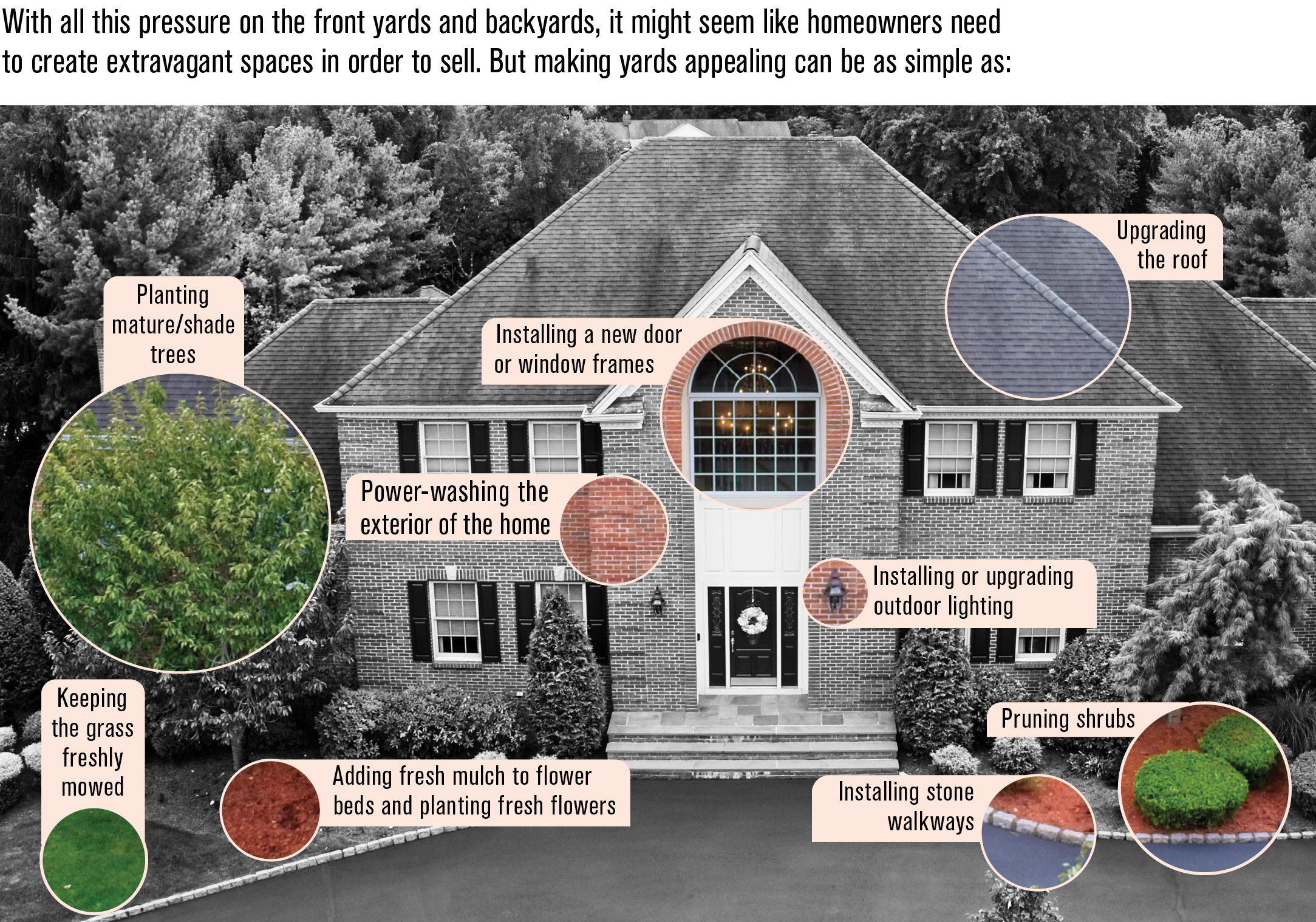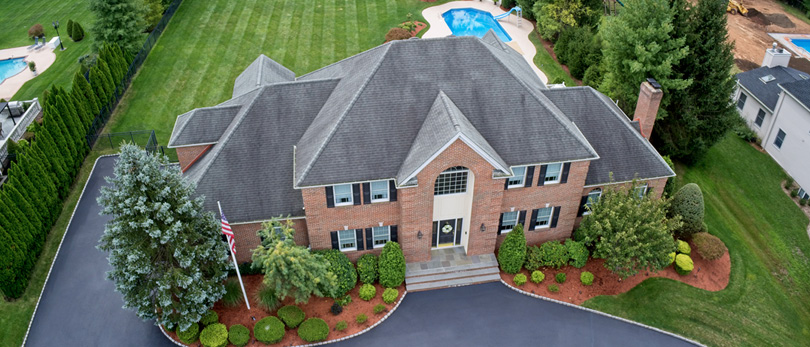Due to the pandemic, outdoor space has become an attractive feature for agents to market to potential buyers
By Megan Kramer
When we think about home enjoyment, much of the focus is on the inside: How big is the kitchen? How many bathrooms? Is the basement finished or unfinished?
But as the pandemic keeps people at home, even the houses we love can start giving us cabin fever. The solution? Stepping out into the backyard.
People are leaning on their own outdoor spaces to get fresh air and sunlight, and perhaps to socialize in a more distanced way than they can inside their homes. This is one of the big reasons people are moving out of cities and urban areas—where they might not have much of a yard, or a yard at all—to suburban areas.
“The market here is super-hot right now, like in most areas throughout the country,” says Steve Rath, CRS, broker at Better Homes Realty in Sacramento, California. “If you’ve got a great property, it’s selling in a week or two. One of the reasons is that there’s been an exodus out of the Bay Area because of COVID-19. People are figuring out they can work from home, so they’re coming to areas like Sacramento, where they can get a lot more home, space and land than in the Bay Area.”
But not all yards are created equal, and homes still need curb appeal to attract buyers. Whether a homeowner is looking to sell quickly, or they want to enjoy their outdoor space until they’re ready to sell, there are some things REALTORS® should keep in mind when advising their clients.
Pretty and Purposeful
Planting flowers, shrubs and trees adds a pleasant aesthetic to front yards and backyards, but if done purposefully, homeowners can also make a positive impact on the environment. Choosing plants, grasses and flowers that are right for a homeowner’s climate zone can support local wildlife, particularly pollinators like bees. Planting based on climate zone reduces the yardwork homeowners have to do because the plants have natural cycles.
“We’re learning that there’s a different kind of curb appeal,” says Kris Kiser, president and CEO of the Outdoor Power Equipment Institute (OPEI) and the TurfMutt Foundation. “People, especially younger generations, want something that’s purposeful. Nature can be tailored to your needs, and there’s a lot of plant material that doesn’t take much work. The key is buying what’s appropriate for the region.”
An appealing curb can be simple
Whether potential buyers are viewing a property in person or online, the front yard is important in attracting their attention and making a good first impression. Without curb appeal, buyers might pass on an otherwise great home.
“I’ve had clients pull up and change their minds about wanting to view the inside due to poor exterior maintenance,” says Lisa Wozniakowski, broker/owner at Blue Ribbon Realty LLC in northwest Indiana, who has been a REALTOR® in her market since 2004 and is working toward her CRS Designation. “They think if the current owner can’t maintain the lawn or exterior paint, or keep garbage out of the front yard, what are they doing to take care of the furnace, plumbing, electric, etc.?”
While a front yard attracts buyers, backyards are what hold their interest. This exterior space offers the cleanest slate for buyers to envision their lives there because there are fewer personal touches than inside the home. “It’s easier to visualize a backyard cookout because there usually aren’t pictures of someone else’s family hanging on the walls of the backyard,” Wozniakowski says.

Add useful amenities
While a simple, natural outdoor space can suffice to attract buyers, people may be looking for backyards to act as an extra living space because many indoor and outdoor venues remain closed or restricted due to COVID-19. Adding amenities to the exterior space of a home can help homeowners spread out and add value when they go to sell—as long as the amenities are useful.
What someone finds useful can vary from person to person and depend on where they live; however, there are some amenities that have historically been favored by homeowners and buyers alike:
- Outdoor heaters or fire pits
- Pools
- Outdoor kitchens
- Patios or pergolas
- Sheds
“When you add something like a fire pit or an outdoor kitchen, you’re extending your living space, but it’s cheaper than doing an addition to your house,” notes Tracy Jones, CRS, broker associate at RE/MAX Platinum in Sarasota, Florida. “You’re not adding square footage to your house, but you’re adding space you can enjoy, so you don’t feel as cooped up.”
Some features have also become more popular due to the pandemic; for example, sheds that were once used for extra storage are now being used as dwellings for family members, work-from-home offices or quiet spaces to escape.
A note of caution
If a homeowner plans on living in their home and enjoying their outdoor space for a while, it’s important that they tailor it to their needs and preferences. However, they should be warned: upgrades and additions might not get them dollar-for-dollar resale value.
“I had a seller who invested $80,000+ in the backyard and even though she wasn’t planning on moving, she was still upset that it didn’t add that much to the value of the home,” Wozniakowski says.
Homeowners should instead focus on what they want their yard to do—create a safe space for children and pets to play, an entertainment spot or a quiet reprieve—so they can enjoy it, and the right buyers will come when they’re ready to sell.
Who Decides What’s Useful?
There are many outdoor features that entice buyers, but it’s important to know what sells in your region or market. For example, while pools are practically a given in hot and humid climates like the South, they are a bust in more temperate climates.
“Over the years, we’ve filled in several pools,” says Jay Buerger, CRS, managing broker/owner at Buerger and Company Real Estate in Denver. “Our summers last maybe five months, and pools are relatively expensive to maintain and come with liability costs. I would say 30% of buyers will disqualify a house because it has a pool.”
Likewise, while water features seem like wasted space in some areas, depending on their price point, Buerger has seen Denver buyers covet features like waterfalls.
Want to learn how you can boost your curb appeal? Check out the Home & Garden section of This REALTOR® Life blog at CRS.com/resources/this-realtor-life-blog.
Photo: iStock.com/Johnrob








